Epson 5020UB Handleiding
Bekijk gratis de handleiding van Epson 5020UB (7 pagina’s), behorend tot de categorie Beamer. Deze gids werd als nuttig beoordeeld door 58 mensen en kreeg gemiddeld 4.5 sterren uit 29.5 reviews. Heb je een vraag over Epson 5020UB of wil je andere gebruikers van dit product iets vragen? Stel een vraag
Pagina 1/7

By M. David Stone | May 7, 2013
Summary excerpts
Color Brightness: What It Is, Why It Matters
“Color brightness, color light output, or simply CLO...has an excellent pedigree, as part of the
Information Display Measurements Standard ”
“Differences in image brightness are a big part of why color
brightness is worth knowing about”
“What these results confirm is that, as a practical matter, if you're showing primarily black and
white images like word processing documents or spreadsheets, DLP and LCD projectors with the
same ANSI lumen measurements will both be equally bright. For color images however, whether
PowerPoint slides or photos, the LCD projector will be brighter.”
“The difference in color brightness, however, was huge, with the LCD projector delivering essen-
tially the same number for color brightness as for white brightness, and the DLP projector
coming in at just 680 lumens, or about 21 percent of its measurement for white light.”
“Almost all (DLPs) boost their brightness for white light-
-which is what ANSI lumens measures--by adding one or
more additional panels beyond red, green, and blue”
“[The standard] was developed by the International Committee for Display Metrology (ICDM),
which is part of the Society for Information Display (SID), in cooperation with the Video Elec-
tronics Standards Association (VESA). All of which makes it a pretty definitive standard.”
1-chip DLP 3-chip 3LCD
The DLP projector’s color brightness is
only 21 percent as much as the 3-chip
3LCD projector.

Color Brightness:
What It Is, Why It Matters
PC MAGAZINE • May 7, 2013
By M. David Stone | May 7, 2013
As you may have noticed, there's a
(relatively) new spec for projectors in town,
variously called color brightness, color light
output, or simply CLO. Whatever you call it, is
has an excellent pedigree, as part of the Infor-
mation Display Measurements Standard
version 1.03 (IDMS 1), dated June 1, 2012.
IDMS 1 was developed by the International
Committee for Display Metrology (ICDM),
which is part of the Society for Information
Display (SID), in cooperation with the Video
Electronics Standards Association (VESA). All
of which makes it a pretty definitive standard.
As you may also have noticed, Epson recently
began touting its LCD projectors as having
three times brighter colors than "leading com-
petitive projectors." The claim also applies
more broadly to any projector using 3LCD
technology, which means a light engine with
three LCD chips, with one each for the red,
green, and blue primary colors.
The competition Epson is referring to is the
universe of DLP projectors that use a single
DLP chip (which I'll refer to simply as DLP
projectors). The claim is based on the typical
difference in color light output between a 3LCD
projector and a DLP projector that both have
equal brightness in ANSI lumens, which mea-
sures white light output. The problem with the
claim is that although it's both true and mean-
ingful, it's also easy to misunderstand.

PC MAGAZINE • May 7, 2013
Why Three Times as Bright Isn't Three
Times as Bright
The first issue is that brightness is actually the
wrong word, although almost everyone uses it
this way (and I'll continue to use it through the
rest of this discussion). Technically, however,
brightness refers strictly to perception, so how
bright something is means how bright it looks.
The intensity of light that's coming out of the
projector is more properly called illuminance.
The difference matters because perception of
brightness is logarithmic. Triple the illuminance
of a projector, and the same size image will look
brighter, but nowhere near three times as bright.
So what Epson is actually claiming is that its
3LCD projectors typically deliver color with
three times the illuminance of DLP projectors
with the same ANSI lumen rating, not three
times the brightness in the technically correct
definition of brightness.
A second semantic issue is that you can also use
brightness as a term for describing color quality.
In fact, the hue-saturation-brightness color
model uses brightness as one of the three param-
eters for describing any given color, with a
vibrant yellow, for example, qualifying as
brighter than a less vibrant version of the same
yellow hue.
What makes this second issue particularly prob-
lematic is that a projector's color brightness
actually does tell you something about its color
quality. However, the relationship between the
color brightness and color quality is compli-
cated. Because of that, I will ignore issues of
color quality for the rest of this discussion, and
cover them separately. What I'll concentrate on
here is the difference in color brightness mea-
surements between 3LCD and DLP projectors.
Where Brighter Colors Come From
The reason for the difference in color brightness
between the two technologies is easy to under-
stand. Projectors with 3LCD technology simply
add red, green, and blue together to create white.
So if you measure the lumens for red, green, and
blue separately, and then add them up, the total
will be the same as the industry-wide ANSI
lumen measurement for white.
In contrast, DLP projectors create colors by
projecting one color at a time, in sequence. The
vast majority use a rotating color wheel, shining
light through color panels on the wheel. Almost
all boost their brightness for white light--which
is what ANSI lumens measures--by adding one
or more additional panels beyond red, green,
and blue, typically using some combination of
white (a clear panel), cyan, and yellow. If you
measure the brightness for red, green, and blue
with these projectors, and then add up the mea-
surements, the total will be less than the mea-
surement for white by however much the addi-
tional panel or panels add to the total ANSI
lumen measurement.
Different DLP projectors use different color
wheels, with a variety of both arrangements of
color panels and proportion of color-panel colors
they use to create various colors on screen. Even
with a given projector, the proportions change
depending on the color mode you're using, which
is why colors look different with different color
modes.
This means that the ratio between white light
output and color light output will vary from one
DLP projector to another, and even, for the same
projector, from one color mode preset to
another. In one set of tests with business projec-
tors in the 2000 to 3500 lumen range that the
3LCD Group provided, the actual level of color
Product specificaties
| Merk: | Epson |
| Categorie: | Beamer |
| Model: | 5020UB |
| Kleur van het product: | Black, White |
| Ingebouwd display: | Nee |
| Gewicht: | 8172 g |
| Breedte: | 467.36 mm |
| Diepte: | 396.24 mm |
| Hoogte: | 157.48 mm |
| Geluidsniveau: | 32 dB |
| Aantal lampen: | 1 lampen |
| Soort lamp: | E-TORL |
| Stroombron: | AC |
| Plaatsing: | Desktop, Ceiling |
| Oorspronkelijke beeldverhouding: | 16:9 |
| Ethernet LAN: | Nee |
| Ondersteunde video-modi: | 1080i, 1080p, 480i, 480p, 576i, 576p, 720p |
| Geïntegreerde geheugenkaartlezer: | Nee |
| Zoomcapaciteit: | Ja |
| Projector helderheid: | 2400 ANSI lumens |
| Projectietechnologie: | 3LCD |
| Projector native resolution: | 1080p (1920x1080) |
| Geschikt voor schermmaten: | 30 - 300 " |
| Projectie-afstand objectief: | 1 - 10 m |
| Aantal kleuren: | 1.073 biljoen kleuren |
| Matrix grootte: | 0.74 " |
| VGA (D-Sub)poort(en): | 1 |
| Aantal HDMI-poorten: | 2 |
| Soort serieële aansluiting: | RS-232 |
| Audio-ingang (L, R): | 1 |
| Composiet video-ingang: | 1 |
| Componentingang video (YPbPr/YCbCr): | 1 |
| DVI-poort: | Nee |
| Focus: | Handmatig |
| Zoom type: | Handmatig |
| Diafragma (F-F): | 2 - 3.17 |
| Brandpuntbereik: | 22.5 - 47.2 mm |
| Levensduur van de lichtbron: | 5000 uur |
| Type lichtbron: | Lamp |
| Bevestigingsmogelijkheid voor kabelslot: | Ja |
| Kabelslot sleuf type: | Kensington |
| Ingebouwde luidsprekers: | Nee |
| Stroomverbruik (in standby): | 0.27 W |
| Ondersteunde beeldverhoudingen: | 4:3, 16:10 |
| Zoomverhouding: | 2.1:1 |
| Throw ratio: | 1.34 - 2.68:1 |
| Formaat analoog signaal: | NTSC, NTSC 3.58, PAL, PAL 60, PAL M, PAL N, SECAM |
| Volledige HD: | Ja |
| RS-232 port: | 1 |
| 3D: | Ja |
| Lampvermogen: | 230 W |
| Contrast ratio (dynamisch): | 300000:1 |
| Geïntegreerde TV Tuner: | Nee |
| Levensduur van de lichtbron (besparingsmodus): | 4000 uur |
| AV-ingang: | Ja |
| Gewicht (imperiaal): | 18 lbs |
| Stroomvoorziening via USB: | Nee |
| Matrix type: | 3-panel (p-Si TFT actief) |
| Geluidsniveau (spaarzame modus): | 22 dB |
| Afstandsbediening inbegrepen: | Nee |
| Wifi: | Nee |
| AC-ingangsspanning: | 100 - 240 V |
| AC-ingangsfrequentie: | 50 - 60 Hz |
| Stroomverbruik (typisch): | 364 W |
| Type product: | Projector met normale projectieafstand |
| 3D Ready: | Ja |
Heb je hulp nodig?
Als je hulp nodig hebt met Epson 5020UB stel dan hieronder een vraag en andere gebruikers zullen je antwoorden
Handleiding Beamer Epson
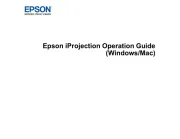
9 September 2025
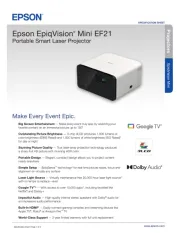
8 September 2025
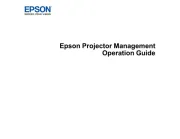
8 September 2025
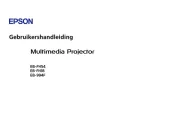
30 Augustus 2025
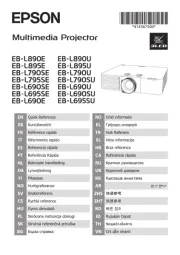
29 Augustus 2025
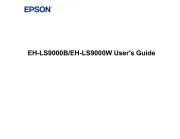
29 Augustus 2025
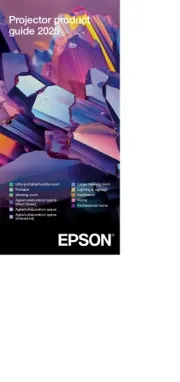
12 Augustus 2025
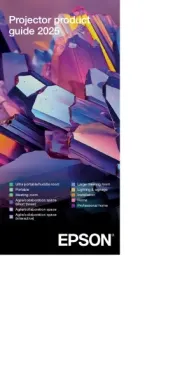
12 Augustus 2025
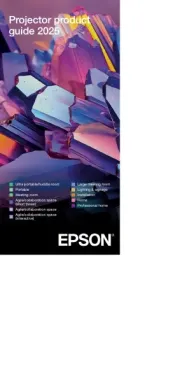
11 Augustus 2025
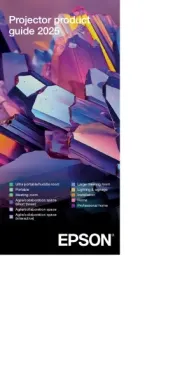
11 Augustus 2025
Handleiding Beamer
Nieuwste handleidingen voor Beamer
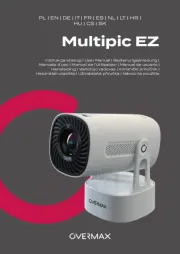
13 September 2025
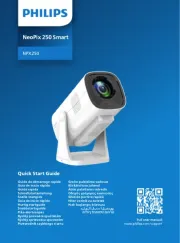
8 September 2025
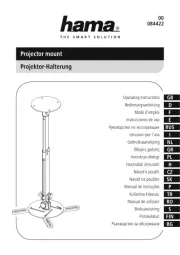
3 September 2025
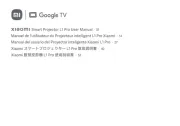
1 September 2025
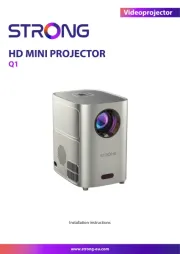
26 Augustus 2025

26 Augustus 2025
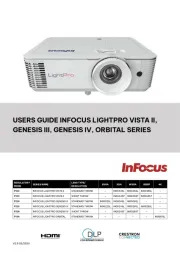
25 Augustus 2025
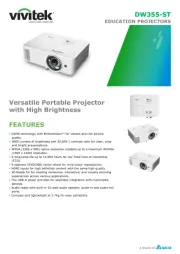
15 Augustus 2025
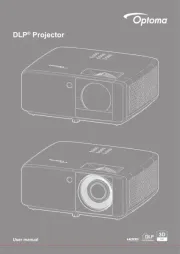
11 Augustus 2025
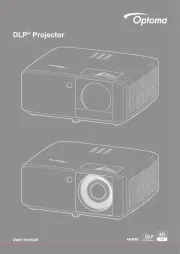
11 Augustus 2025